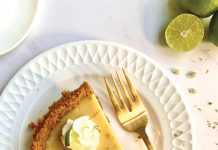
Drinking expensive Champagne can be exhilarating—so much so that it’s easy to conclude no other fizzy wine comes close. The truth is that some of the California sparklers and even a few wines from Prosecco can provide a satisfying experience. If you’re searching for a celebratory holiday bottle, consider these alternatives.
Le Rêve, Domaine Carneros by Taittinger: When the Taittinger family established their California outpost in 1987, they had the wealth to purchase the best vineyards. They also had Eileen Crane. Thirty-two years later, Crane is still there as winemaker, turning out some of the best sparkling wine on either side of the Atlantic. The 2012 Le Rêve ($115) is a blanc de blancs made from Chardonnay grown on estate vineyards in the Carneros AVA. In terms of taste, it is simply luscious. The 2012 rosé ($135), only available at the winery, is even better. For something more accessible, try the regular Domaine Carneros brut ($31).
J. Schram, Schramsberg: Jack and Jamie Davies founded Schramsberg in Napa in 1965, at a time when even making still wine was a risky business. It’s not an exaggeration to say that the couple introduced the idea of high-quality domestic sparkling wine to America. The 2010 J. Schram ($120), their top-of-the-line bottling, is a blend of 84 percent Chardonnay and 16 percent Pinot Noir, aged for seven years on the yeast; there’s also a rosé version (2011, $160). A good introduction to the Schramsberg style is the 2016 blanc de blancs ($41).
L’Ermitage, Roederer Estate: Champagne Louis Roederer came late to the California sparkling wine party. Jean-Claude Rouzaud selected the Anderson Valley vineyard site in 1982, and his son now oversees the operation. The estate’s regular cuvée debuted in 1988, followed by the 1989 L’Ermitage in 1993. The blends for L’Ermitage are bolstered by the addition of oak-aged reserve wines. Current vintages include the 2012 brut ($50) and 2011 brut rosé ($65).
Ultramarine: We’ve all heard of cult Cabernets, but Ultramarine is California’s first true cult sparkling wine. It’s vintage-dated from a single vineyard (the famed Charles Heintz site in Occidental), bottled, riddled, and disgorged by hand—and nearly impossible to find. Winemaker Michael Cruse produces three types: blanc de blancs ($214), blanc de noirs ($197), and rosé ($266). Bear in mind that these are after-market prices as the winery sells out each year. Ask to get on the mailing list and cross your fingers.
Altaneve: When David Noto dedicated himself to making the planet’s finest Prosecco in 2013, he had a tough road ahead of him. The wine was firmly entrenched in the $10-$15 category, and the best examples weren’t available outside Italy. Noto, who is descended from 10 generations of winemakers, was undeterred. His wines are all-natural, sustainable, and hand-harvested from some of the best vineyards in the Valdobbiadene hills.
How good are they? In a word, stunning. Altaneve Z ($46), his tête de cuvée, is produced from a micro-plot that yields only 1,500 bottles annually. It has a light-straw color and a nose redolent of limestone and minerals. Dry yet luscious in the mouth, with notes of citrus and stone fruits buoyed by good acidity, it makes an elegant and memorable statement on the palate. The finish is long and mouthwatering. The Altaneve spumante rosé ($31) is nothing short of delightful, and the Prosecco Superiore DOCG ($32) is rich and opulent, with a core of tropical fruit flavors that invites you to take another sip.








Facebook Comments